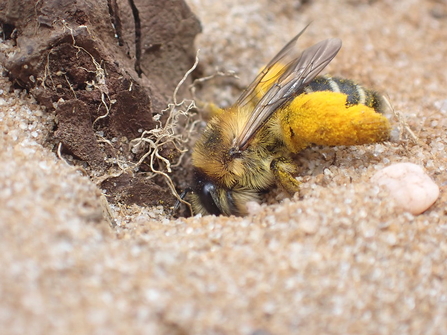One of our core values is that 'conservation depends on local knowledge and good science', both are essential parts to remain evidence-based in our approach to conservation. We are recognised as evidence champions and alongside a team of dedicated volunteers, carry out a range of standardised monitoring techniques on our reserves.
Britain has a long history of more ad-hoc monitoring through the generation of biological records. Biological records tell us which species are found where and when. Alongside standardised monitoring they are a key component of evidence-based conservation. The Wildlife Trust BCN hosts three records centres who hold over 5 million records between them. We are just starting on two very exciting projects which will analyse biological records for the counties to inform conservation in the future.


